WARNING: For those of you that are looking for a Christmas themed post, please scroll down a bit to Monday’s entry (or click on this link). Today’s post is most definitely NOT filled with holiday-themed joy, but as always there is travel related joy for me, so please read on.
When I travel, there are some things that I always like to include in my itinerary regardless of where I am. I love to spend an afternoon just getting lost in a new city. I love to spend time in a local café watching locals go about their day. I always look for a local Capoeira academy to take a class or join a roda. And I always like to visit local cemeteries.
Yep. The girl who can barely get through an episode of American Horror Story on television loves spending time in cemeteries. Of course I’m not a big fan of death and loss, but when I visit a foreign land, cemeteries represent history and religion and culture more than they represent suffering. Also, in many cities, the graveyards are quiet, park-like areas where I can escape the busy local streets for an hour or two. I love to look at the tombstones, figure out how old the person was when they died and perhaps think about what kind of life they led. And the more faded the tombstone inscription the better. It allows my mind to wander and think about the history of the place.
Am I weird? Does anyone else do this?
The first time I visited a foreign cemetery, it was completely unplanned. I was studying abroad in Tokyo and just out exploring my host family’s neighborhood (near the Meguro train station, for those of you who know Tokyo). As I was walking, I came across a plot of cleared land with many small thin pieces of wood and irregularly shaped slaps of stone sticking out of the ground. I wasn’t quite sure what I had happened upon until I noticed a group of 3 people praying and shaking incense sticks. Aaaah! This was a cemetery. Not having travelled out of the country before, I just assumed all cemeteries looked the same with ornate stone headstones, lots of bright plastic and real flowers and perhaps a large marble mausoleum. In this Japanese version, there was very little ornamentation and the graves were closely packed together. That accidental discovery got me wondering about cemeteries in other countries and what they looked like.
Now I don’t get to make a cemetery visit on every trip I go on. Local cemeteries are not normal tourist attractions so they can be difficult to get to, especially when you only have a few days in a city. But I do my best. I’ve wandered through cemeteries in France, Macao, China, Thailand, England and Italy. In Oman I asked our friend/tour guide why I didn’t see any cemeteries as we drove for hours around his country. He explained that I wouldn’t really notice them because Muslim cemeteries don’t allow any sort of monuments or flowers on grave sites.
When I was living in Fortaleza, Brasil I really wanted to visit the local cemetery but I just could not convince my boyfriend at the time to go with me. I thought maybe he was superstitious or a bit scared, so I picked a sunny day and went on my own. Upon returning, I told my boyfriend that he missed a great day and teased him about being scared. He ended up telling me that he didn’t go because one of his childhood friends had been killed and was buried there. He just didn’t want to deal with the memories. Well, THAT really made me stop and think. While cemeteries represent a cultural lesson for me, I have the benefit of rarely knowing anyone actually buried in those plots.
As I plan my 2012 travels, I hope to be able to take in a few more graveyard visits in Turkey, Lebanon, Jordan and various countries in Europe….above ground, of course.


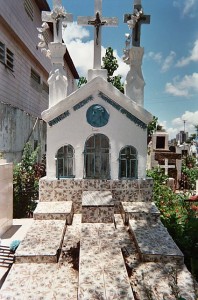
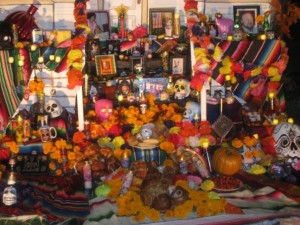
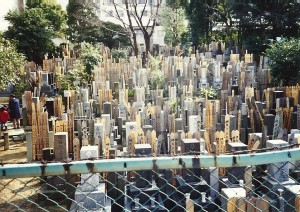
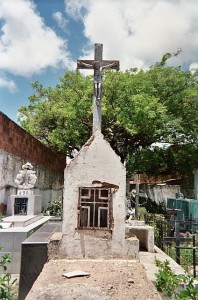







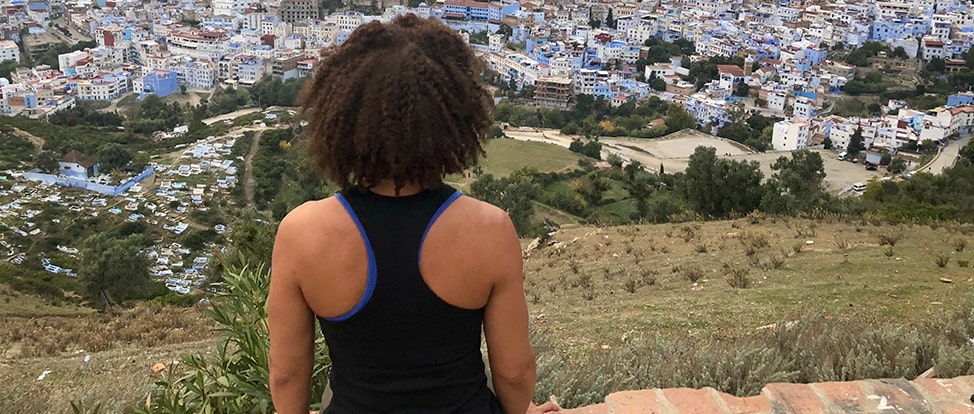
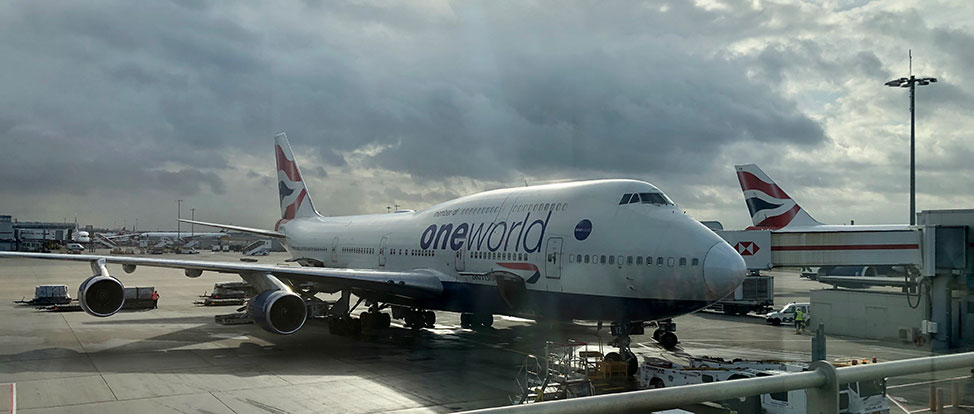
Wow, Ama! I really enjoyed your post. I think I’ll start noticing cemeteries too. In my village in Suriname, only Saramakan men were allowed to burry/ visit graveyards. Usually graveyards were only accessible by motor canoe and marked by a dozen pieces of traditional cloth hung over long poles. I could see them from the river as I traveled up and down the river. Once a female loses a son, father, or husband they never allowed to go to the grave.
Amber, thanks so much for adding this. Fascinating…I wonder why only men were allowed to visit the cemeteries. I can’t imagine losing a close family member and not being allowed to go visit the gravesite. Were the people in your village quite religious? Were men and women buried together? I’d love to hear more!
Very interesting.
I always visit graveyards, old churches, tomb sites etc. I like how it connects me with the history of a place.
Even at home, here in Vancouver, my husband and I will sometimes grab our cameras and head out to visit a cemetery we like. Sounds weird I know, but the images are soul stirring.
Sandi! Thanks for the comment – glad to know I’m not the only one. When I get back to Vancouver, I’ll have to have you take me to one of your favorites!